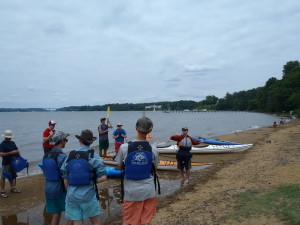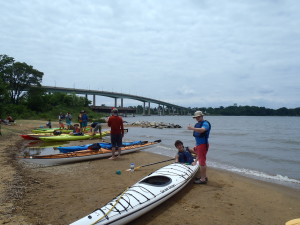The “qualified supervision” of BSA’s Sweet Sixteen involves many responsibilities, one of which is to understand when to exercise “general supervision”, when to exercise “specific supervision”, and when to transition from one to another.
In a reported incident of years past, a school group of 6 youth, a parent, a teacher, and an experienced paddling guide planned a 4 mile canoe round trip to an ocean island. On the return trip, the parent experienced a medical emergency that required the attention of the guide. As the seas were becoming more treacherous due to a weather front, the guide had the students and teacher raft their canoes together, presumably to avoid dispersal of the entire group in the ocean, and perhaps to serve as a barrier to all canoes swamping. The students and teacher ultimately became separated from the guide and the parent due to waves and wind. The entire group required Coast Guard rescue. Three students perished.
This tragedy had many causes. But, the leadership roles played by each adult give pause.
For instance, who was in charge?
From the standpoint of general supervision, it may be said that, initially, several layers of general supervision existed. The parent had general supervision of their son, the teacher had general supervision of her students, and the guide had general supervision of the entire group while on the water.
 However, upon occurrence of the parent’s medical emergency, the guide had to transition from general to specific supervision with regard to the needs of the parent. As the guide realized that he could no longer exercise adequate general supervision over the rest of the group, he made a decision that the students and teacher should raft their rafts together.
However, upon occurrence of the parent’s medical emergency, the guide had to transition from general to specific supervision with regard to the needs of the parent. As the guide realized that he could no longer exercise adequate general supervision over the rest of the group, he made a decision that the students and teacher should raft their rafts together.
But, the ultimate effect of the parent’s medical emergency was to place the students under the sole supervisory authority of the teacher, as the two groups became separated, under conditions which were probably beyond the skill and experience of the teacher (open water canoeing under challenging environmental conditions with canoes lashed together, with youthful participants of questionable experience). This was clearly a circumstance that the teacher had not contemplated at the beginning of the event!
The takeways for Scout leaders are many. Scout leaders must recognize that there will be times when, under challenging times, their role must transition from one of general supervision to one of specific supervision, whereby attention is directed to a specific individual, such as for a medical emergency, as in the story. But, when that occurs, what happens to the rest of the group?
The planning of an activity involves general supervision, as does the overall conduct of the activity.
Specific supervision may, however, be also be required when an activity involves youthful, inexperienced participants having a low level of skill, particularly when participating in an activity which is complex, difficult, or has a high degree of inherent risk, in an environment unfamiliar to the participants. Under those circumstances, the adult leader should maintain close contact and communication with the participants. And, specific supervision may be directed to one or more participants, or to the entire group of participants.
It should be recognized, however, that directing attention or supervision to a specific person means that other participants will no longer benefit from that adult’s attention, and that other adult volunteers who are present must take up the slack with regard to the remaining group. This will, in effect, then change the adult:youth ratio for the worse.
It is thus crucial that those “taking up the slack” have the training and experience to then assume the supervisory role unexpectedly thrust upon them, including the ability to deal with more youth than originally planned for from the standpoint of the adult:youth ratio.
 The above story has real implications for units who make use of untrained and inexperienced adults during outdoor activities!
The above story has real implications for units who make use of untrained and inexperienced adults during outdoor activities!
That is, in the event of an emergency, when such adults may be required to unexpectedly assume a supervisory role, will they be capable of doing so in that environment, or will they merely be an adult participant also in need of supervision (such as an untrained adult who believes themself to merely be a “chaperone”) to the detriment of the youth.
The safety of Scouts may ultimately depend on the ability of adult volunteers to not only recognize how and when to make a timely transition from general to specific supervision, but also whether other adult volunteers who may be present are able to adjust to such a transition in roles. Experienced and trained adult volunteers are crucial to this equation.
The safety of Scouts should not be based on the random choice of which adults may be present during an outing.
